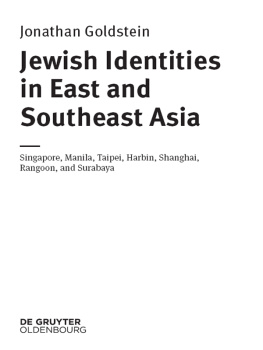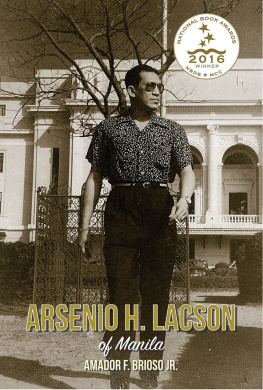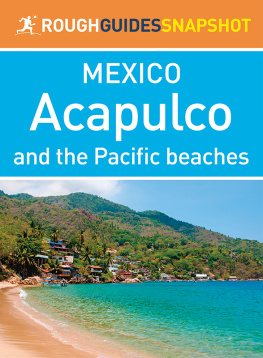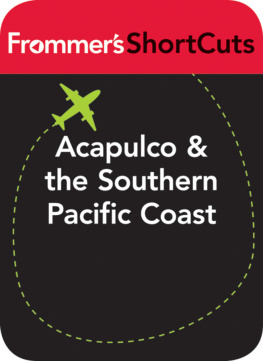AuthorHouse UK Ltd.
2011 Shirley Fish. All rights reserved.
No part of this book may be reproduced, stored in a retrieval system, or transmitted by any means without the written permission of the author.
Certain stock imagery Thinkstock.
Because of the dynamic nature of the Internet, any web addresses or links contained in this book may have changed since publication and may no longer be valid. The views expressed in this work are solely those of the author and do not necessarily reflect the views of the publisher, and the publisher hereby disclaims any responsibility for them.
Contents
As I have always had a love for the sea and anything to do with sea vessels, I was disappointed to find that there was only one book which was specifically devoted to the subject of the Manila-Acapulco galleons, and this work was produced by William Lytle Schurz in 1939. Since Schurzs monumental and well-researched work, no other attempt has been made to tackle this enormous topic even though new information has been introduced into the overall picture of the historical aspects of the vessels. As a result, I turned my attention to researching the topic out of a personal interest in maritime history. I also devoted myself to trying to find whatever new archaeological information was available regarding the vessels. The information gathered through archaeological excavations in the twentieth century, has shed another dimension to the story of the galleons which formed the worlds first transpacific trade link between the Philippines, China and Mexico.
Unlike Schurzs work, where he examined the historical and political aspects concerning the galleons, I have tried to present a description of the vessels themselves i.e., how they became an extension of Spains Atlantic fleets and how they were strictly regulated, constructed, manned and provisioned. Additionally, I have added chapters on the types of cargoes and weaponry the vessels carried, as well as a discussion on daily life on the galleon. Wherever possible, I have inserted eyewitness accounts which, I believe, has added an enriching element into the story of the Manila-Acapulco galleons.
I have also tried using as many archaeological materials as I could locate and study in order to better describe the story of the galleons from an archaeological point of view. In particular, the fact that the San Diego galleon was the only vessel discovered through archaeological underwater excavations in the Philippines, had provided an enormous amount of information on the type of sea vessels which were constructed in the Philippines in the sixteenth century. The majority of the San Diegos artifacts are now housed in a permanent exhibition at the National Museum of the Philippines in Manila.
While, I have tried to present the latest information uncovered through my research of the topic, I realize that future researchers will be able to add so much more to the discussion of the Manila-Acapulco galleons. Almost every chapter in this book can lend itself to further exploration and expansion.
The book has also been provided with an Annotated List of the Transpacific Galleons, from the sixteenth to the nineteenth centuries. The vessels mentioned in the list are those that I came across during my research. Whenever possible, I have added a commentary on any known bits of information regarding the said galleons. The list is not complete, but future researchers can add vessels to it as they become known.
I would like to thank Cynthia Ongpin Valdes for her permission to use the photos in her publication, Saga of the San Diego , as well as Owis Bolunia, Archaeologist with the National Museum of the Philippines in Manila for photos of the ships anchor found in the province of Sorsogon, Philippines. I also thank Dr. Eusebio Dizon, Chief Archaeologist at the National Museum of the Philippines for his comments on the San Diego archaeological underwater excavation of the galleon in the 1990s.
In 2010, a full sized replica of a galleon arrived in Manila Bay from Spain. The vessel was on view for several days before sailing to Cebu. The public was invited to see and tour the ship. I would like to thank Arlene Maurillo, in Manila, for the use of her photos of the galleon.
Lastly, I would like to take the opportunity to thank my husband, Ian Fish, for his patience and assistance in endlessly reading and commenting on my manuscript as the work progressed. His invaluable input has been tremendously appreciated.
Shirley Fish
Manila, Philippines
January 2011
After receiving the citys blessing and prayers for a safe journey across the Pacific, the Nuestra Senora de la Concepcion and her accompanying vessel the San Ambrosio sailed from Manila to Acapulco in June 1638. The citys entire Spanish community had turned out to say farewell to the officers, passengers and crew of the two vessels. It was commonly known that the voyage from the Philippines to Mexico was often filled with many perils along the way. Severe storms, high waves, fire or a ship that was found to be unseaworthy, while already too far out in the ocean to do anything about it, added to the tension aboard the vessels. Another concern was always the fear that a pirate ship or privateer could attack the vessels, killing or capturing its passengers. For many who sailed on the galleons, the voyage was always viewed as a terrifying prospect where almost anything could happen and often did. It was not unusual for those making the journey to write a will before putting their lives at risk.
The vessels sailed as closely as they safely could to the stone walls of the fortified city and awaited the customary send off by the priests of Manila Cathedral. If the ship was fortunate in having good sailing weather, the hazardous journey to Acapulco was expected to take at least six to seven months. The two ships first had to travel through the maze of islands, shoals and sandbars that lay scattered across the seas between Manila and the San Bernardino Strait. The strait consisted of a dangerous body of water serving as the passageway between the islands of Luzon and Samar and opening onto the Pacific. This part of the journey could take from one to two months to complete depending on the winds and currents the ship encountered. As the vessels continued towards the San Bernardino Strait, they would have been expected to stop in several pre-determined locations in order to take on fresh water and provisions.
When the two ships entered the Pacific, they sailed in a northerly route towards Japan where they picked up the Kuroshio Current off the coast of Taiwan. From there, the circular current carried them to the Westerlys or anti-trade winds found between the latitudes of 35 and 65 degrees and blowing from west to the east. These trade winds, in turn, propelled the vessels towards the coast of California and the area of Mendocino. While keeping the coastal areas of California in sight, the galleon normally turned in the southerly direction towards Baja California and then to the headland of Cape Corrientes on the Mexican coast. From there it was a short distance further south to Acapulco.











